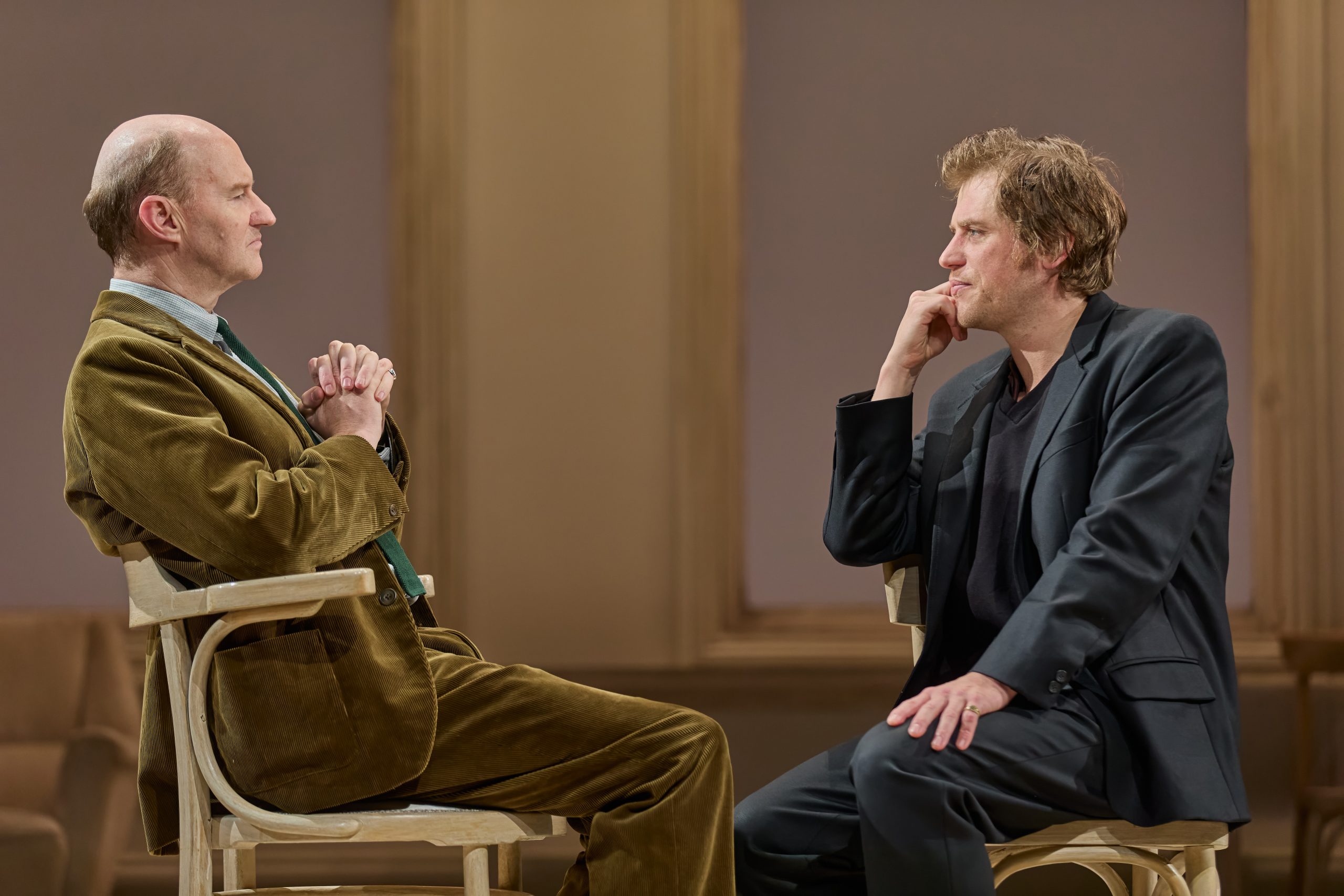Review: Richard Burton and Sir John Gielgud Create a Hamlet for the Ages in The Motive and the Cue
Jack Thorne’s play resurrects two stage greats at the Noël Coward Theatre in London.

(© Mark Douet)
Hamlet has been performed on Broadway dozens of times. Most of the runs have been relatively short, but one of them stands out not just as the longest running among them (137 performances) but as the most memorable. It ran in 1964 and has come to be known as Richard Burton’s Hamlet, though credit for its success belongs as much to its director, Sir John Gielgud.
That production and the often-testy collaboration between the two are the subjects of Jack Thorne’s The Motive and the Cue, brilliantly directed by Sam Mendes at the Noël Coward Theatre (following a run at the National Theatre last year) and featuring two of the most mesmerizing lead performances I’ve seen in some time.
The play delves into the behind-the-scenes evolution of Gielgud’s innovative idea for the production, which was to stage Hamlet as though it were a rehearsal: no period costumes or Elsinore set, just actors in street clothes in a studio space. Designer Katrina Lindsay recalls the turtle-necked vibe of the 1960s, while Es Devlin’s set moves seamlessly from the rehearsal room, a cavernous chamber with a long reading table, to a New York apartment. There, Burton (a growlingly energetic Johnny Flynn) cohabits with his new wife, Elizabeth Taylor (a cat-eyed Tuppence Middleton), who is denied entrance to rehearsals because she might “threaten tumescence.”
Flynn and Middleton ably spar in their scenes, though there’s nothing like the Burton-Taylor intensity of Virginia Woolf here. The crackling action happens between Flynn and Mark Gatiss, who plays Gielgud with uncanny precision. From the smooth undulations of voice to the eyes squinting in perpetual interrogation, Gatiss channels Gielgud to perfection. “You shout wonderfully,” he says with exquisite irony as Gielgud tries to gently rein in Burton’s excessive emoting. Watching these two opposites go at it makes for some of the play’s funniest and most engaging scenes.
Genuinely moving moments are also woven in as the action shifts to Gielgud’s apartment, where we see the (mostly) closeted actor bashfully share a moment of platonic intimacy with a male escort (sensitively played by Laurence Ubong Williams). This is a Gielgud that we’re not used to seeing — vulnerable, diffident, slightly off-balance — but in his stunningly human performance, Gatiss infuses Gielgud with a believability that never feels at odds with the confident director of the rehearsal room.
This is not to say that the play is always riveting. Depending on your love of Shakespeare, The Motive and the Cue can lumber on with its at-times lengthy recitals from Hamlet. Yet the play does get to the bottom of one of its essential questions: Why do we keep returning to this play again and again after we’ve seen it before? As Flynn gives his rendition of Burton’s “To be or not to be,” we realize it’s because we never see the same Hamlet twice, and once again we hear the Bard’s words as if for the very first time.








